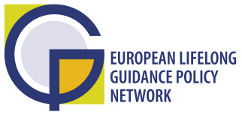Italian EU Presidency Conference: 5th European Conference on Lifelong Guidance Policies
ITALIAN EU PRESIDENCY CONFERENCE:
5th European Conference on Lifelong Guidance Policies
20 October 2014, Rome, Italy
The 5th European conference on lifelong guidance policies took place 20 October 2014 in Rome, Italy. The conference was jointly organised by the Italian EU Presidency 2014, ISFOL, the Italian Ministry of Education, Universities and Research, the Italian Ministry of Labour and Social Policies and the ELGPN. The main objective of the conference was to examine the transversal role and position of lifelong guidance in meeting the Europe 2020 priorities. A second theme was the use of information and communication technology in guidance, as a follow-up to the 6th European conference on this theme held on 16-17 September 2009 in Riga, Latvia.
Mr Luigi Bobba, the Under-Secretary of Ministry of Labour and Social Policies opened the conference and stressed in his speech the importance of the structured European co-operation in develolping national guidance practices and policies. Ms Stefania Giannini, Minister of Education, University and Research presented the recent progress in Italy and the new national guidelines for lifelong guidance service delivery. She highlighted also the importance of guidance in establishing more close links with education and skills demand in the labour market. Ms Valentina Aprea, from the Conference of Regions and Autonomous Provinces emphasised the importance of lifelong career management skills and diverse delivery modes to different age groups. Ms Paola Nicastro, General Director from ISFOL introduced the role of ISFOL both in national level and in wider European co-operation. She highlighted the ongoing commitment for future LLG practice and policy development.
In June 2014 the ELGPN members were asked to provide their country responses on the progress of lifelong guidance strategies approved by relevant authorities and key developments on the use of Information and Communication Technologies (ICT) in relation to the national LLG policies. Altogether 25 ELGPN member-countries provided their responses to the questionnaire to feed the discussions topics for the conference.
In his synthesis of the country responses Dr Tibor Bors Borbely-Pecze (Hungary) noted that the development of national lifelong guidance strategies is a phenomenon of the last 15 years. In several countries the OECD (2001-02) country-studies on career guidance served as a push factor. In the ELGPN impact evaluation 2014 more than half of the member-countries reported that the Work Programmes 2008-14 have had significant influence on national policies on lifelong guidance. A further origin of national lifelong guidance strategies or cross-policy action plans has been European employment-policy-related developments since the late-1990s. For example, the National Action Plans often discussed the role of lifelong guidance as a supporting tool for workforce development and full employment. Finally, the social policy developments at European level, the development of the European Social Model and the flexicurity agenda of the EU have also often been cross-linked with lifelong guidance.
More recently, national LLG policy development has been connected with discussions on the role of LLG concerning early-school leaving (ESL) national targets, national inclusion plans (e.g. Roma Inclusion Action Plans, migrant integration), youth policy developments (notably the role of the Youth Guarantee), employment sub-systems such as skill needs and anticipation systems (e.g. EURES reform) and the transparency of the European learning and working area (such as EQF and ESCO). Dr Borbely-Pecze concluded that a national strategy for lifelong guidance has been launched or is in progress in seven ELGPN member-countries and often lifelong guidance-related elements are included in different strategies. In most countries delivery is based on different sub-systems such as PES, schools, and the adult education system, while both government agencies and NGOs can be contracted.
Ms Jaana Kettunen (Finland) noted that almost all countries inform that their national strategies or guidance policies include considerations on more efficient utilization of ICT in guidance. There is a common notion that the technology evolves rapidly so the governments should be following the development in this field. The analysis of the ELGPN country responses revealed four distinct descriptive categories reflecting the qualitatively different ways of experiencing the developments in the use of information and communication technologies (ICT) in relation to national lifelong guidance policies. In terms of funding some countries report difficulties to allocate funding to develop the use of ICT in guidance. On the other hand some countries have been able to effectively utilise either co-funding mechanisms or used governmental funding for national online services. Second, the focus on the development varies from technology to wider development of an integrated system with consistent staff development programmes and coherent all-age service development. Third, the use of ICT aims to widen access with distance service delivery. Some countries inform that they do not have any national online services. Most comprehensive distance service delivery mode could be described as multi-synchronous models which combine direct communication and asynchronous modes. These types of models are targeted to all citizens also outside traditional office hours.
Within the table discussions during the event the national delegations were invited to reflect the previously described findings from their own national policy perspectives. The participants stressed that it the future it is important to offer sustainable structures to continue and improve the exchange of practices and mutual learning between the member-countries. ELGPN as a network has been an agent for innovation and peer learning in the field of LLG policy development and implementation, helping its member-countries as well as European stakeholders in human resource policy developments. To avoid fragmentation and to maintain and strengthen the political momentum of LLG policy development, it is necessary to further enhance synergies between and among the different guidance actors and stakeholders at national, regional and local levels.


